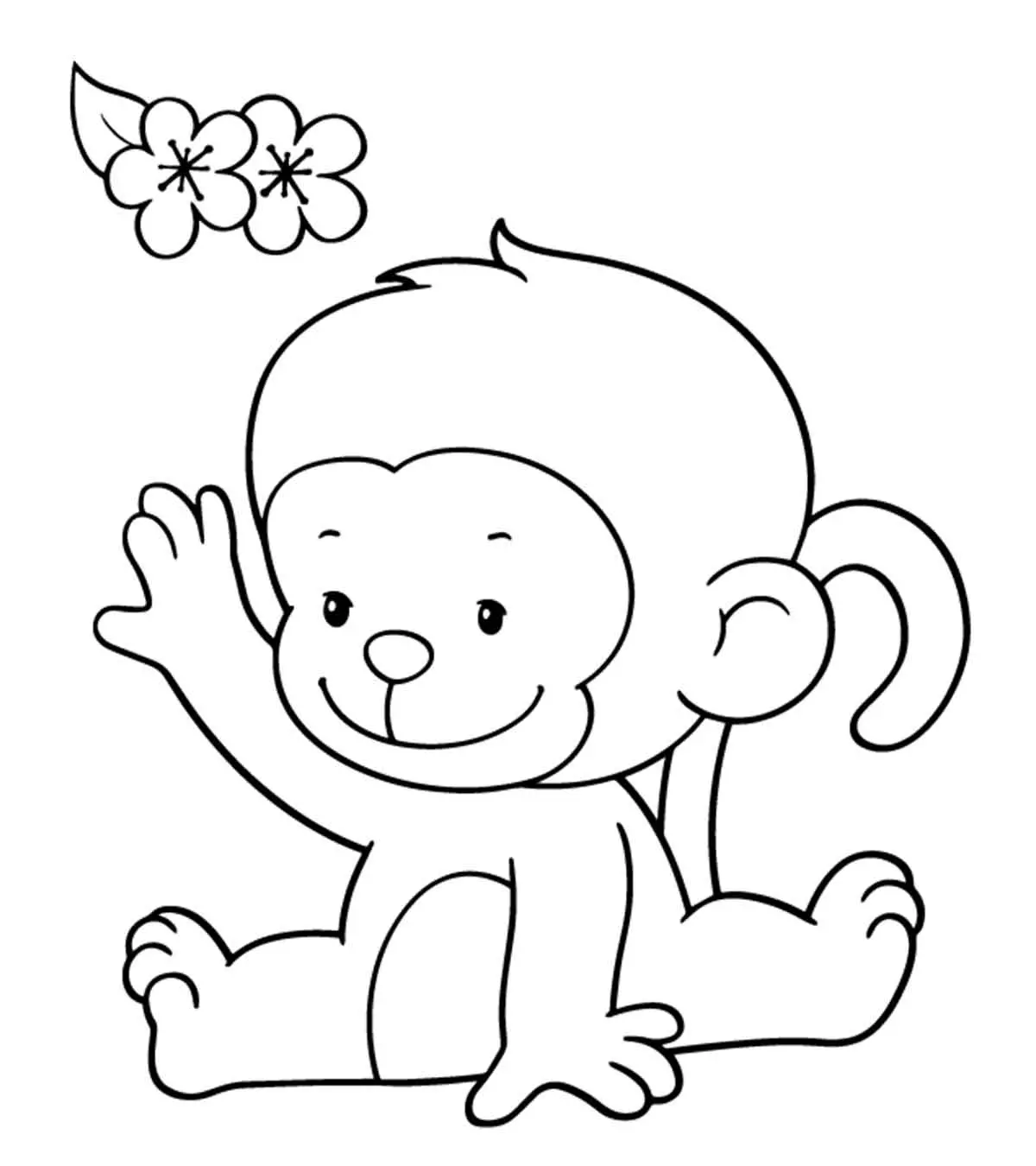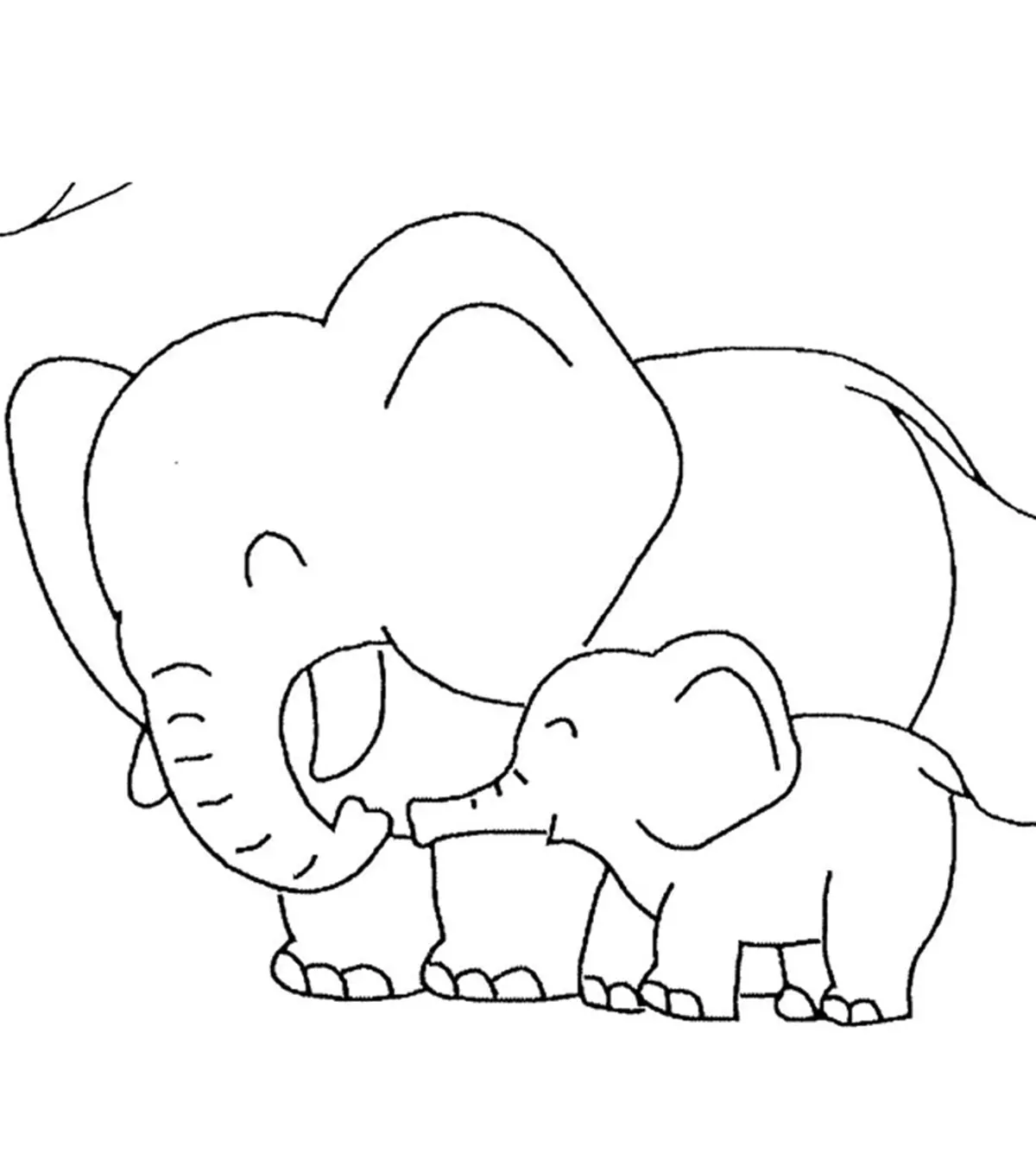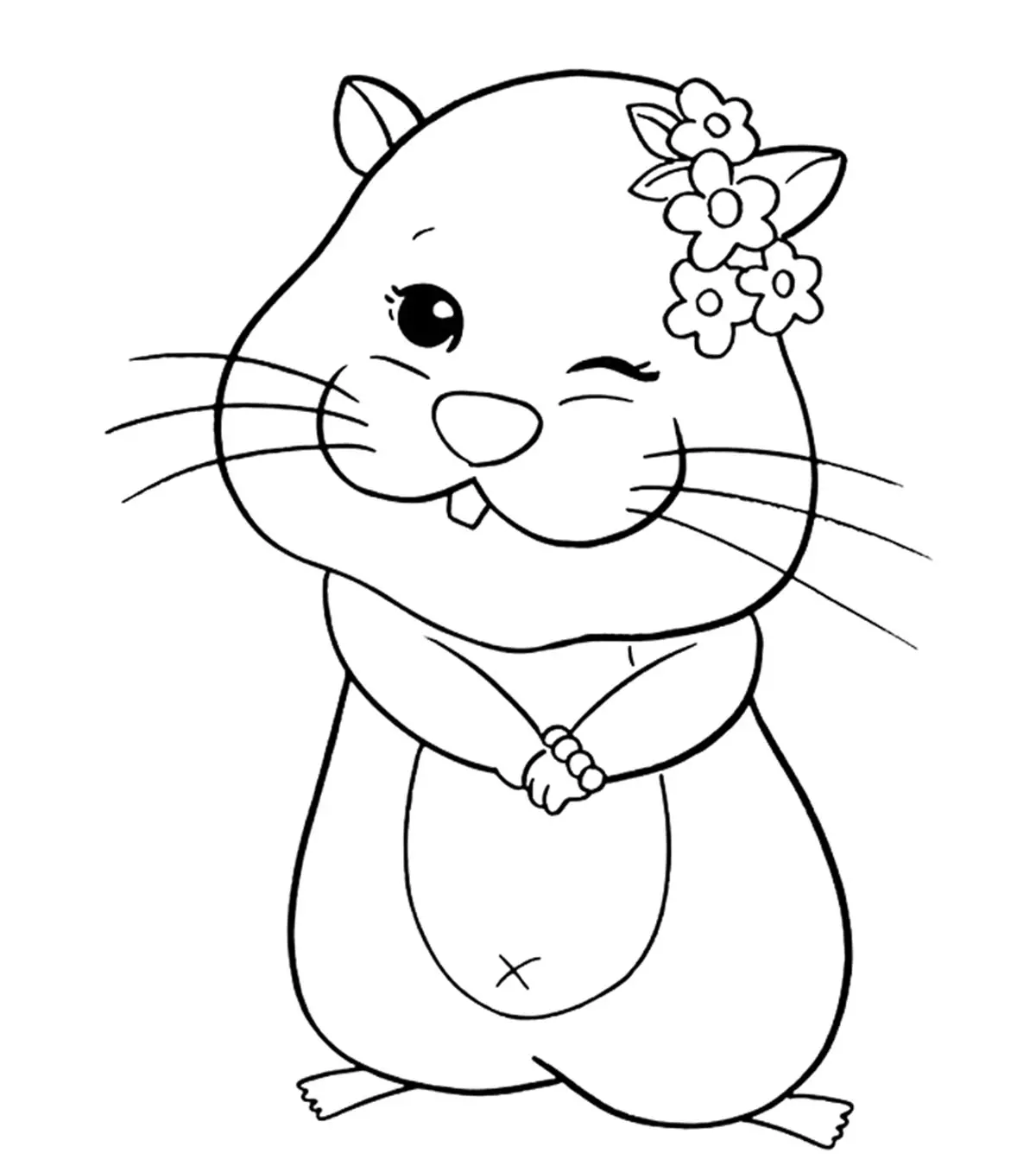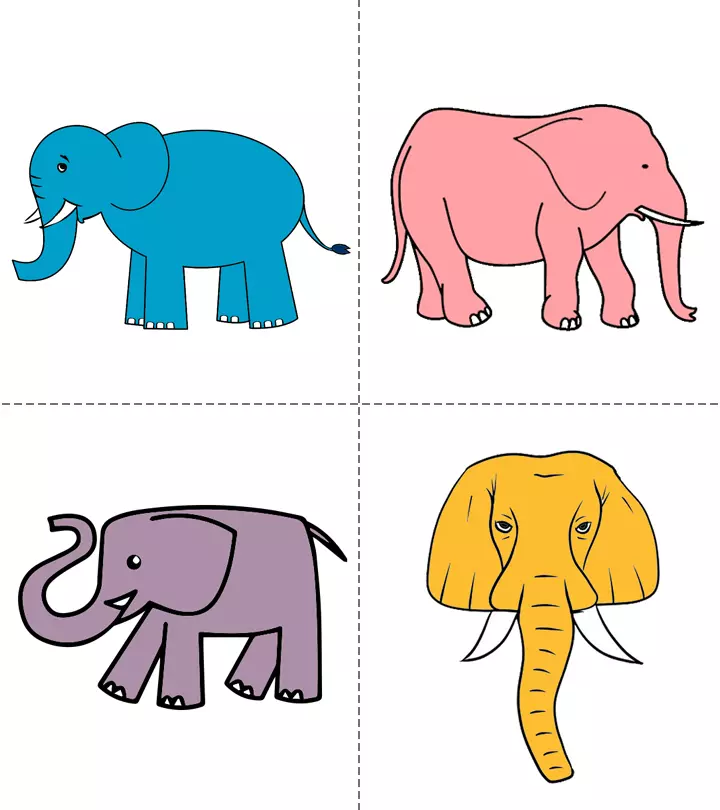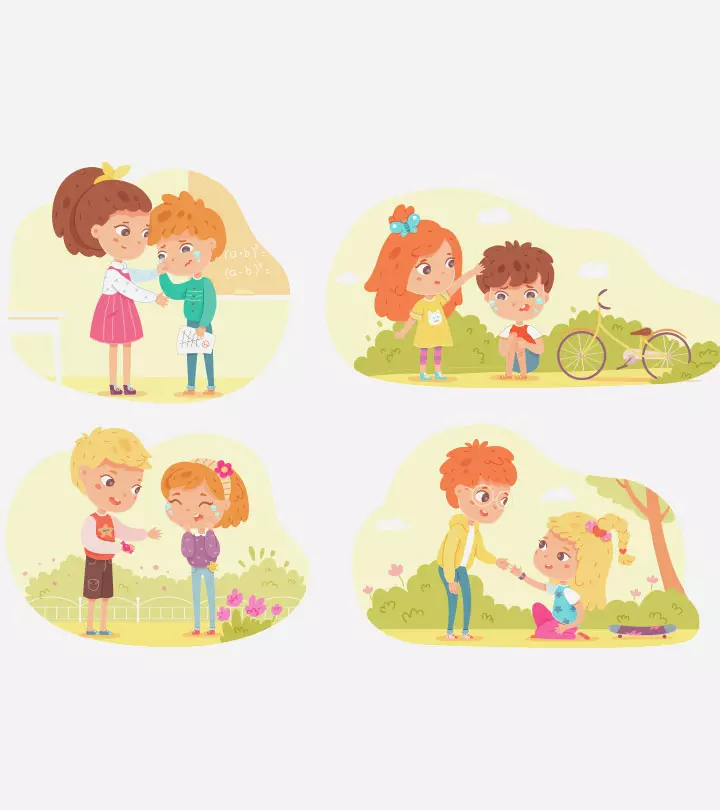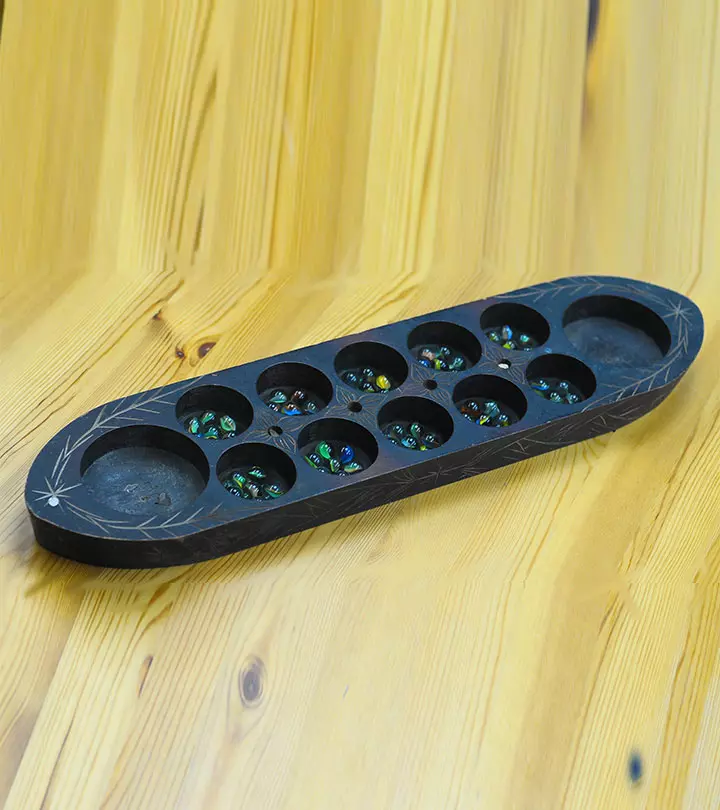
Image: Shutterstock
The Mancala game for kids teaches them to think and count strategically. Mancala is an old family game originating in Africa about 4,000 years ago. However, some studies also suggest Egyptian roots (1). This game is known by many names, including Wari, Khala, Bao, and Mangala (2), and is often called the sowing game or the count-and-capture game (3). Mancala is suitable for adults and children alike, so it’s the perfect addition to the family room. This two-player game can be played using a marble, plastic, or wood board (4). In ancient times, people used seeds, colorful stones, and beans to play Mancala. If you’re intrigued by this fascinating game, we’ve included the rules and fundamentals you need to know to play Mancala. Let the game begin.

Key Pointers
- Mancala is an ancient game originating from Africa about 4,000 years ago.
- This game can be played by both adults and children using marbles, wood or plastic materials.
- Mancala has two variations: Kalah, designed for children, and Oware, suitable for adults and children.
- Kalah game board consists of two rows of small pockets with storage pits on each end. The objective is to collect as many beads as possible at the end of the game.
- In contrast, Oware’s game board is similar to Kalah’s, but the rules for sowing and capturing
Rules Of The Mancala Game
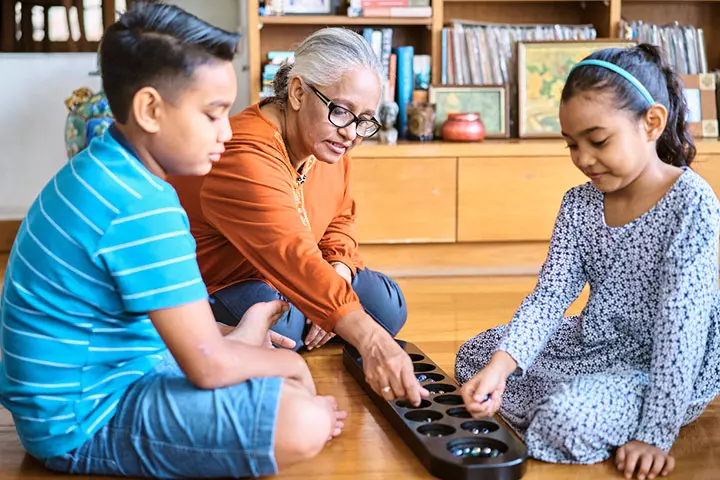
You will need
- Mancala board
- 48 beads or stones
- 2 players
How to play Mancala? Depending on the variant of this fun game, there are different rules of capture.
In most of the versions of Mancala, the object is the capture of the most beads or stones. And the rules of this board game are simple enough for kids to learn. Some Mancala rules for kids include:
- Begin the game by placing a specified number of beads in each small pocket.
- Let the players take turns at ‘sowing; and ‘capturing’ the seeds.
- A player will sow the ‘seeds’ or beads by selecting a pocket, scooping up all the seeds in that pocket and then dropping a bead in each of the pockets adjacent to the starting pit.
 Did you know?
Did you know?Variations Of Mancala
There are two main varieties of Mancala- Kalah, which is a children’s game and Oware, which can be played by both kids and adults.
1. Kalah
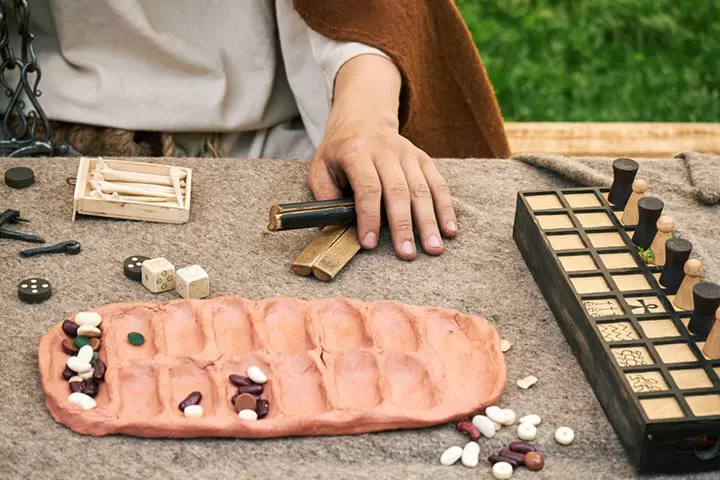
Although Mancala is a game for all ages, Kalah, as mentioned earlier, is the Mancala for Kids. The rules of this game were invented by William Julius Champion, an American. The game is ideal for kids aged 3 to 10. The objective of the game is to collect the most beads by the end of the day before one player clears their side of beads or pieces.
Set up
- In Kalah, the game board has two rows of six small pits or pockets, with a large storage pit at each end. Place the board between the two players. The six pockets or cups will make the playing area. The big bowl to the right is Mancala. It’s here the captured pieces will be kept.
- Each player will get 12 beads. Place four beads on each of the 12 pockets. If your kid is a beginner, then you can start with just three beads in each pocket.
The game
- Select who will go first. You can flip a coin to choose the beginner.
- The beginner has to take all four stones or beads in a pocket on her side and place one bead in any of the four adjacent pockets. The beginner can grab just one stone that is on his side.
- Players can put the stones only in their Mancala, not the opponent’s Mancala. Skip the method even if you have enough stones to reach the opponent’s Mancala. You can place the stone in the opponent’s pocket, though.
- Now take turns picking the beads from any pocket and putting them. If the last stone ends up in your Mancala, then you can take another turn.
- If the last bead that you drop lands in an empty pocket on your side, then you can capture the piece along with any piece in the hole directly opposite. Plus, you will also get all of your opponent’s beads that are in the opposite pocket.
- Try to control the center pockets so that you find it easier to capture your opponent’s stones.
- The game will end when the six pockets of one player are empty. The player who still has stones left in the cup will capture the beads and keep them in his Mancala.
- Now compare the number of stones in the Mancala. The player with the most stones will win the game.
 Trivia
Trivia2. Oware
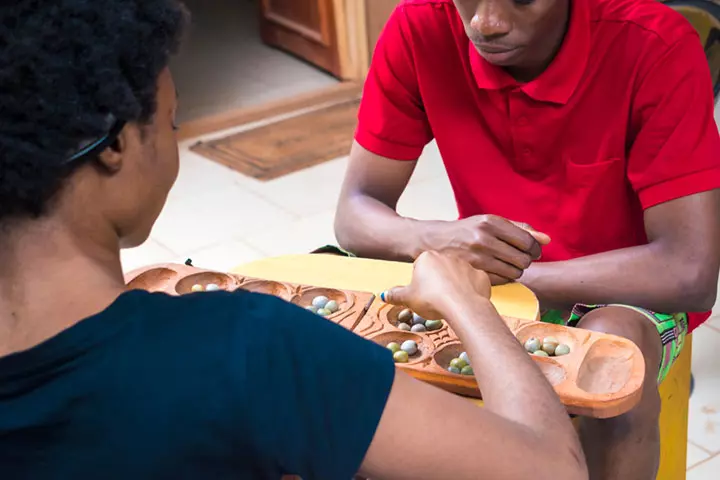
Oware, a variant of Mancala, is a tad more complicated game recommended for kids aged 11 and up.
Set up
The game board for Oware is similar to Kalah. It consists of six small pits or pockets with two storage pits. Even the ‘sowing’ is similar to Kalah. While sowing:
- The players can pick one of the smaller houses in their row
- The players can scoop out all the beads or seeds in that house and
- By moving counterclockwise, the players can drop one seed in each of the small houses until they have sown all the seeds in their hands.
Rules
The sowing may be simple, but the rules of the game are entirely different.
- The player cannot drop beads or seeds into the storage pits as you sow. Players can sow seeds only in the small cups or pockets.
- The rules of capturing are also different. If the first player has finished the move in the second player’s house, then the first player will count the seeds in that pocket. For example, if the player asks whether there are two or three beads in it, and the answer is no, then the first player’s turn will be over and the second player will get to sow the seeds. If the answer is yes, then the first player will get to collect the seed and keep it in this storage pit.
- Next, you will have to examine the next-to-last house. If the house belongs to the second player and contains 2 to 3 seeds, then the first player will get to capture those seeds as well. The first player will continue working backward until he gets to the house that doesn’t contain the correct number of seeds.

Make Your Own Mancala
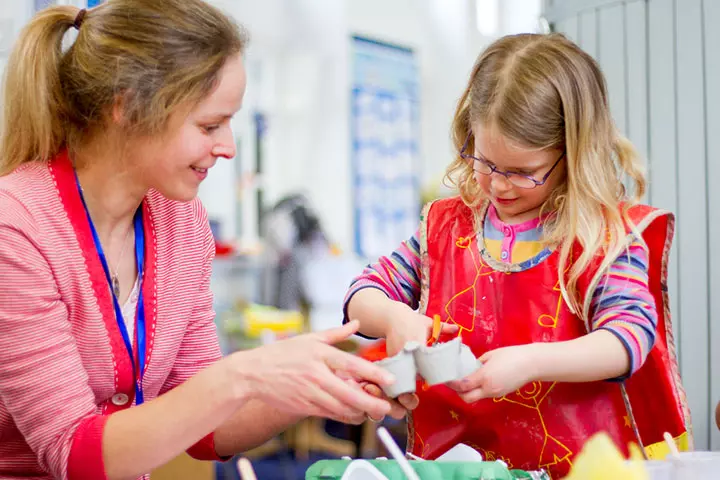
You can even make your own counting game board with your child to increase interest in the game. Here’s a simple DIY for your help. Follow these Mancala directions for kids:
You will need
- Cardboard egg carton with six columns on each side.
- Acrylic paint
- Scissors
- 48 beads, pebbles or dried beans
- Two small glass jars
How to
- Cut and discard the lid of the carton.
- Now tell your child to paint the carton in brown, black or whatever color you like.
- Place four beans in each of the pockets or cups and a jar at the end of the jar. The jar will be your Mancala store. The wooden board for the game is ready for playing.
Benefits Of Playing Mancala
Mancala is a traditional game that has inspired many board games. Despite being played for years, its appeal remains strong. Studies state that it can enhance mental arithmetic and planning skills (5). Below are some more benefits of playing Mancala.
- Analyzing different moves to achieve victory strengthens problem-solving skills.
- Planning several moves improves strategic and logical thinking.
- Recalling and remembering past moves enhances memory.
- Tracking stones and moves boost concentration and focus.
- Recognizing movement patterns sharpens pattern recognition.
- Moving stones in set ways reinforces math skills like addition and multiplication.
- Transferring stones or pebbles between slots improves hand-eye coordination.
- Making decisions under time constraints enhances quick thinking.
- Waiting for turns and observing others teaches children patience.
Talking about the game, social workers Nolan and Ashley say, “This has been such an instrumental tool in my practice as a play therapist. It allows me to begin conversations regarding emotions without being invasive. This game allows children to choose a time they felt an emotion, which in turn allows you, as a therapist, to develop a better understanding of the areas in their lives they are currently comfortable expressing. It is one of the brain games for kids that allows them to develop an understanding that it’s okay to talk about how we feel. I will often use this activity within the first two to three sessions with children and continue to utilize this game throughout the therapeutic relationship to better gauge the child’s developed comfort level, as well as to assess if their ability to express a wider range of emotions has developed at an age-appropriate level (i).”
Frequently Asked Questions
1. Is Mancala an educational game?
Mancala is a traditional game requiring the child to use mathematical skills and strategy to win it. Hence, yes, Mancala can be considered an educational game.
2. Is Mancala a math game?
Yes, it is. The game of Mancala requires a child to estimate and calibrate the positions. This strategy game requires counting, and planning, which are core components of learning mathematics.
Mancala game for kids is an ancient game that teaches essential virtues such as patience, memory, observation, fine motor skills, hand-eye coordination, and concentration. If you are looking for challenging and fun indoor games for kids, then this game is for you. The beauty of the game is that it can either be played on or in teams. A huge board is used to play the game in some parts of the world, and onlookers can cheer or pour in their ideas. You can make your unique mancala to make your kids more interested in the game.
Infographic: Interesting Facts About The Mancala Game
The mancala game is very popular in Africa, the Middle East, and Central Asia. The game comes in a variety of forms and under several titles. The game’s history is intriguing. We provide some interesting information about the game of mancala in this infographic. Scroll on!
Some thing wrong with infographic shortcode. please verify shortcode syntaxIllustration: Mancala Game For Kids - Rules And Variations
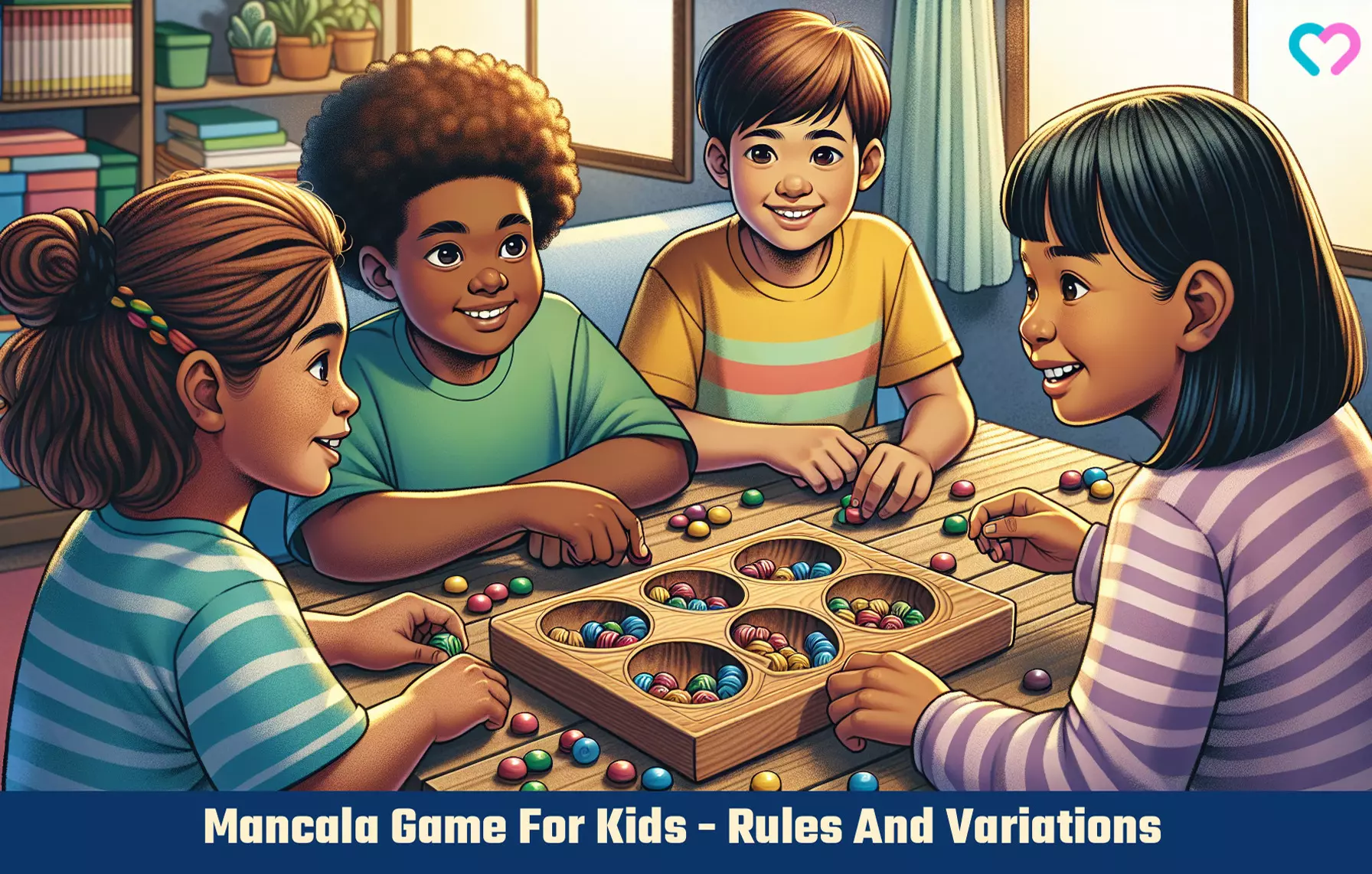
Image: Dalle E/MomJunction Design Team
Learn how to play Mancala, the classic board game! Follow our simple steps to get started and have fun!
Personal Experience: Source
MomJunction articles include first-hand experiences to provide you with better insights through real-life narratives. Here are the sources of personal accounts referenced in this article.
i. Play Therapy: Feelings Mancala;https://theotherchairblog.wordpress.com/2017/05/08/play-therapy-feelings-mancala/
References
- Misconceptions in the History of Mancala Games: Antiquity and Ubiquity
https://intapi.sciendo.com/pdf/10.2478/bgs-2025-0001 - What in the World: Contextualizing Mancala
https://pennds.org/doing-research/exhibits/show/mapping-mancalas/what-in-the-world–contextuali - Mancala game
https://umaine.edu/hudsonmuseum/teacher-resources/games-crafts/mancala-game/#:~:text=Some%20even%20place%20Mancala%20amongfour%20rank%E2%80%9D%20board%20is%20used. - Games
https://prm.web.ox.ac.uk/files/gamespdf - Zhang, Jian et al.; (2025);The Role of Mancala Games in Human Evolution, Cultural Development, and Education: An Anthropological Inquiry
https://pdfs.semanticscholar.org/c9a9/9726bc7a4de25c6ca3e57713c1e01b330921.pdf
Community Experiences
Join the conversation and become a part of our nurturing community! Share your stories, experiences, and insights to connect with fellow parents.
Read full bio of Kristen Miller
Read full bio of Debolina Raja
Read full bio of Harshita Makvana
Read full bio of Nisha Bharatan






